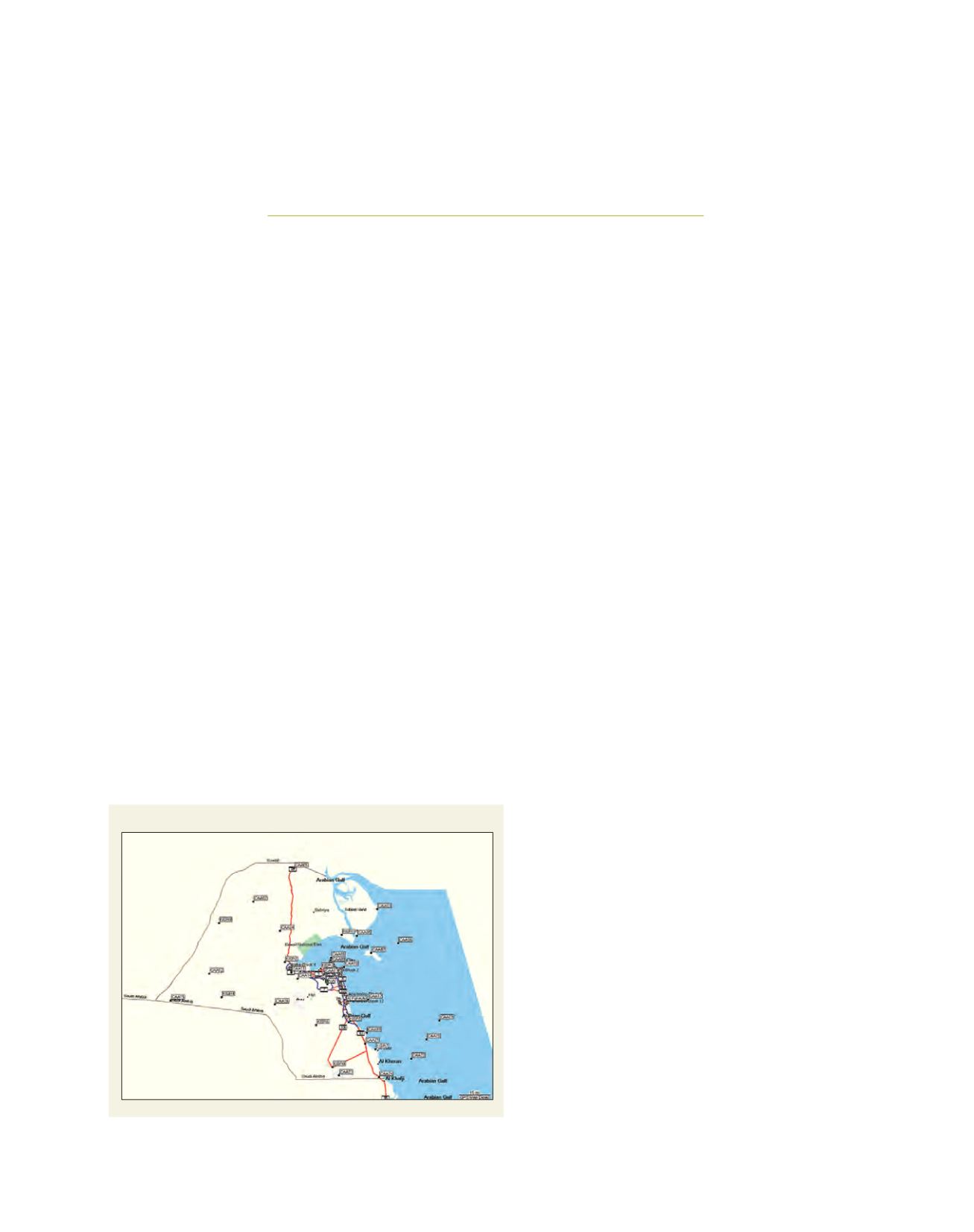

[
] 71
Climate change: challenges and opportunities
for development in Kuwait
A. Ramadan, Kuwait Institute for Scientific Research
W
hether we believe it is mainly natural phenomena,
or mainly the result of human beings, there are few
who would still deny that there has been a significant
change in the Earth’s climate. This is most obvious in the global
rise in mean temperatures, which is widely accepted to be attrib-
uted to the increasing anthropogenic emissions of greenhouse
gases, water vapour, carbon dioxide (CO
2
), methane (CH
4
),
nitrous oxide (N
2
O), ozone (O
3
) and CFCs – an implicit result
of population growth. This argument is strong, although direct
warming due to waste heat, which is typically 60 per cent of that
released by burning fuel, should not be underestimated.
According to projections reported by the Intergovernmental Panel
on Climate Change (IPCC), the average global surface temperature
is likely to rise by 1.1-6.4°C during the 21st century.
1
The melting of the polar ice caps is a direct result of climate change.
Other results of climate change are the variation in pattern and amount
of precipitation, the extinction of rare species and the increased inten-
sity of extreme weather events. Hurricane Gonu, which wrecked the
coastline of Oman in June 2007, serves as a good example of the
extreme weather conditions affecting the Arabian Gulf region.
Kuwait and other Arabian Gulf countries have a huge proportion
of the earth’s fossil fuel reserves. Other, cleaner, sources of power
also abound in the region, including solar energy. The fact that most
of the load on electricity comes from air conditioning units during
the summer season (March-November) ties well with
availability of solar energy.
Kuwait has a network of 34 weather stations. Nine
belong to the Kuwait National Meteorological Network
(KNMN), while the rest are operated by the Directorate
General of Civil Aviation.
Long-term observation of ambient temperature
Historic ambient temperature data covering over 40
years sheds some light on climate change in Kuwait.
Using the linear least squares fitting technique through
the yearly average dry bulb temperature data reveals a
positive gradient ranging between 1.1
o
C/century in July
to 9.4
o
C/century in December, with an overall average
of 4.7
o
C/century.
The overall trend for extreme maximum tempera-
tures over 40 years is positive with the rate of change
being 3.1
o
C/century. When it comes to minimums, the
rate of change is higher, 6.1
o
C/century.
Considering that minimums occur at night and maxi-
mums during the day, this asymmetry is understandable.
Based on four decades of surface thermometrics in the
US, the former Soviet Union and China, Karl et al.
concluded most of the warming in these countries was
due to an increase of mean minimum temperatures with
the mean maximum temperatures displaying a smaller
increase.
2
Such a phenomenon leads to a decrease of
the mean (and extreme) temperature range, which is an
important climate change variable.
3
Increased Diurnal
Temperature Range (DTR) in summers and reduced DTR
in winters suggests increasing cloud cover and increasing
soil moisture may play a direct role (increase in cloudi-
ness suppresses warming during daytime, which results
in reduced maximum and higher minimum temperatures
– hence reducing the magnitude of DTR).
4, 5
This reduction in DTR cannot be solely attributed
to the changes in aerosols, ozone or water vapour and
this is in alignment with the conclusion of Watterton
that such reduction is not fully accounted for by
many climate models.
6
According to him, there are
great errors in the way these models treat clouds. The
extreme temperatures in Kuwait are in accord with
these findings. For the dry bulb temperatures, the
increase in the maximum (daytime) value over the past
forty years is 6.3
o
C/century compared to the 14.4
o
C/
century increase in minimum (night-time) tempera-
G
overnance
and
P
olicy
Locations of weather stations in Kuwait
Source: Ashraf Ramadan
















